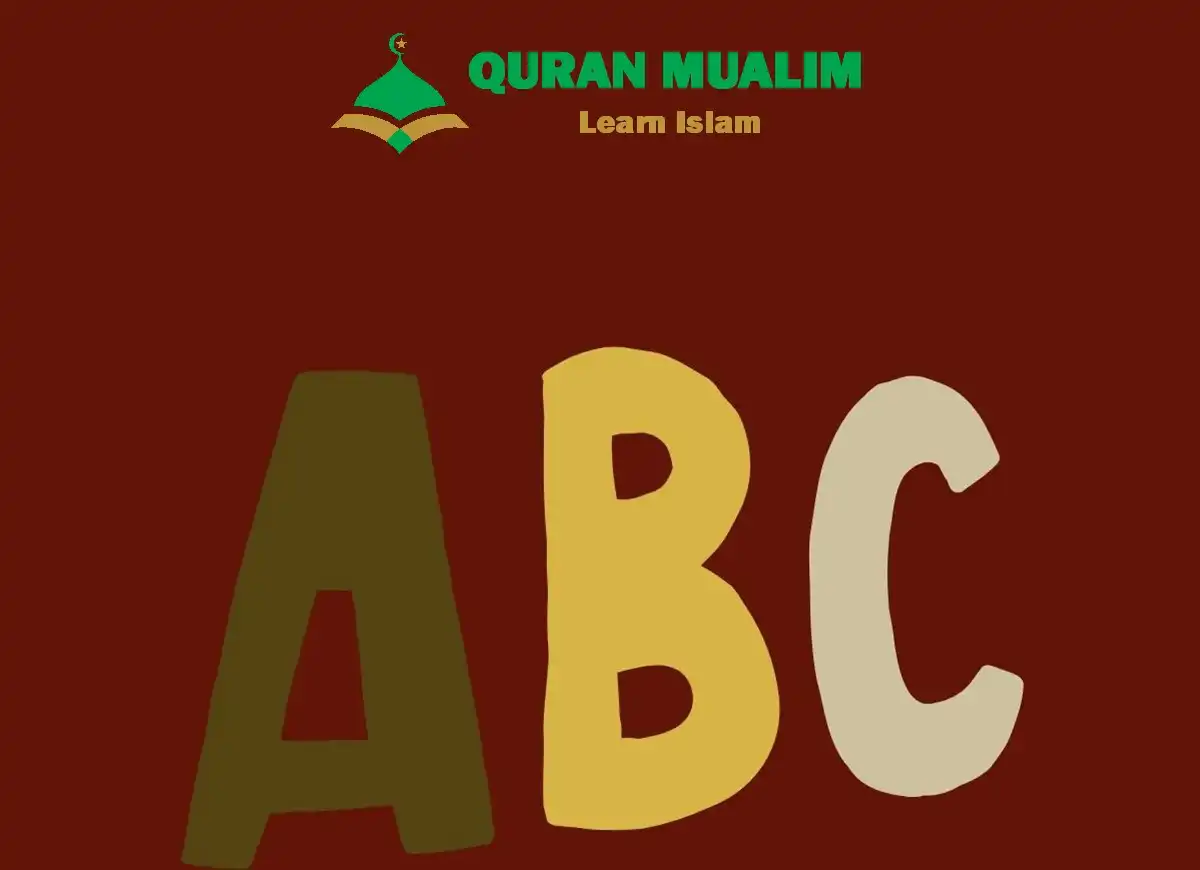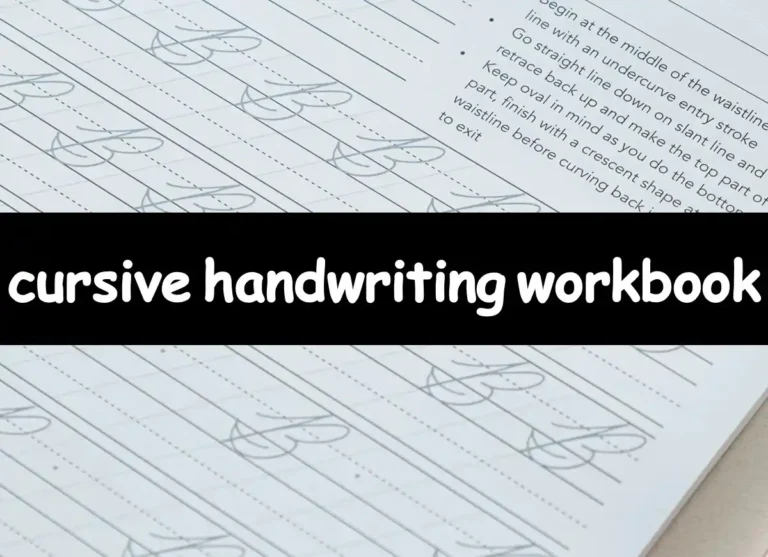English Arabic Letters– The Arabic alphabet has 28 different letters, but this may at first look overwhelming to an individual who is not acquainted with the distinct script of the Arabic alphabet. But learning how to spell the Arabic in English letters can greatly facilitate the learning process. The article provides a very informative discussion of the Arabic alphabet including English translations and the sounds that correspond with each letter and examples of how to write the Arabic using English letters.
Can You Write English Arabic Letters?
Arabizi or the writing of Arabic using English letters and figures is widespread in the informal sphere, such as social media and text messaging. This technique enables the Arabic speakers to communicate conveniently without having an Arabic keyboard.
All Arabic Alphabet with English Letters
There are 28 letters that form the Arabic alphabet, which are symbolic in terms of a particular sound. Although the Arabic letters are totally unrelated to the letters in the Latin language, lots of the learners utilize the Arabic letters alongside English letters in order to resemble the sounds of the Arabic letters.
Here is a table showcasing the Arabic alphabet.
| Arabic Letter | Pronunciation in Arabic | English Letter |
| أ | Alif | A |
| ب | Ba | B |
| ت | Ta | T |
| ث | Tha | Th |
| ج | Jeem | J |
| ح | Haa | H |
| خ | Khaa | Kh |
| د | Dal | D |
| ذ | Dhal | Th |
| ر | Ra | R |
| ز | Zay | Z |
| س | Seen | S |
| ش | Sheen | Sh |
| ص | Saad | S |
| ض | Daad | D |
| ط | Taa | T |
| ظ | Thaa | Th |
| ع | Ayn | ‘A |
| غ | Ghayn | R |
| ف | Fa | F |
| ق | Qaf | Q |
| ك | Kaaf | K |
| ل | Laam | L |
| م | Meem | M |
| ن | Noon | N |
| ه | Ha | H |
| و | Waw | W |
| ي | Ya | Y |
Arabic Alphabet with English Sounds
The Arabic language has numerous sounds which are absent in English. There are also some letters, such as the ones ع (Ayn) or غ (Ghayn), which English speakers may find hard to pronounce. An example is the sound of the letter, خ (Khaa), which is a throaty sound, as well as the sound of the letter, ق (Qaaf), which is a deep and guttural sound.
Must Read: Arabic Alphabets Handwriting Worksheets
The chart below shows the Arabic letters.
| Arabic Letter | English Sound (Approximation) |
| أ | A as in “Apple” |
| ب | B as in “Bat” |
| ت | T as in “Top” |
| ث | Th as in “Think” |
| ج | J as in “Jam” |
| ح | H as in “hat” (stronger) |
| خ | Kh as in “Bach” (throaty) |
| د | D as in “Dog” |
| ذ | Th as in “This” |
| ر | R as in “red” (rolled) |
| ز | Z as in “zebra” |
| س | S as in “Sun” |
| ش | Sh as in “Ship” |
| ص | S as in “saw” (emphatic) |
| ض | D as in “door” (emphatic) |
| ط | T as in “top” (emphatic) |
| ظ | Th as in “that” (emphatic) |
| ع | Deep A (guttural) |
| غ | Gh like the French “R” as in “Paris” (throaty) |
| ف | F as in “fun” |
| ق | Q as in “Qatar” (deep sound) |
| ك | K as in “kite” |
| ل | L as in “love” |
| م | M as in “moon” |
| ن | N as in “nice” |
| ه | H as in “Hat” |
| و | W as in “Water” or “Oo” as in “Food” |
| ي | Y as in “Yes” or “Ee” as in “See” |
Understanding Arabic Alphabet’s Structure
The Arabic alphabet consists of 28 letters each of which has its own shape that varies with the position in which it appears in a word. To read and write in Arabic, it is necessary to understand the isolated, initial, medial and final forms of these letters.
Must Read: Learn Arabic Alphabets – QuranMualim
Here is a table that presents the Arabic alphabet in order.
| Letter | Name | Initial Form | Medial Form | Final Form | Example | Translation | Transliteration |
| ا | Alif | ا | ـا | ـا | أسد | Lion | Asad |
| ب | Baa | بـ | ـبـ | ـب | باب | Door | Bab |
| ت | Taa | تـ | ـتـ | ـت | تفاح | Apple | Tuffah |
| ث | Thaa | ثـ | ـثـ | ـث | ثوب | Cloth | Thawb |
| ج | Jeem | جـ | ـجـ | ـج | جسر | Bridge | Jisr |
| ح | Haa | حـ | ـحـ | ـح | حديقة | Garden | Hadeeqa |
| خ | Khaa | خـ | ـخـ | ـخ | خبز | Bread | Khubz |
| د | Dal | د | ـد | ـد | دجاج | Chicken | Dajaj |
| ذ | Dhal | ذ | ـذ | ـذ | ذهب | Gold | Dhahab |
| ر | Raa | ر | ـر | ـر | بئر | Well | Bi’r |
| ز | Zaay | ز | ـز | ـز | زرافة | Giraffe | Zarafa |
| س | Seen | سـ | ـسـ | ـس | سمك | Fish | Samak |
| ش | Sheen | شـ | ـشـ | ـش | شمس | Sun | Shams |
| ص | Saad | صـ | ـصـ | ـص | صقر | Falcon | Saqr |
| ض | Daad | ضـ | ـضـ | ـض | ضفدع | Frog | Difda’ |
| ط | Ta’ | طـ | ـطـ | ـط | طائر | Bird | Ta’ir |
| ظ | Dha’ | ظـ | ـظـ | ـظ | ظرف | Envelope | Zarf |
| ع | A’yen | عـ | ـعـ | ـع | نعل | Shoe | Naa’l |
| غ | Ghayen | غـ | ـغـ | ـغ | غزال | Gazelle | Ghazal |
| ف | Faa | فـ | ـفـ | ـف | فاكهة | Fruit | Fakha |
| ق | Qaf | قـ | ـقـ | ـق | قمر | Moon | Qamar |
| ك | Kaf | كـ | ـكـ | ـك | سكر | Sugar | Sukkar |
| ل | Laam | لـ | ـلـ | ـل | ليمون | Lemon | Laymun |
| م | Meem | مـ | ـمـ | ـم | مفتاح | Key | Miftah |
| ن | Noon | نـ | ـنـ | ـن | نمر | Tiger | Nimr |
| هـ | Haa’ | هـ | ـهـ | ـه | سهل | Easy | Sahl |
| و | Waw | و | ـو | ـو | ورد | Rose | Ward |
| ي | Yaa’ | يـ | ـيـ | ـي | يدي | My Hand | Yady |
As you may notice, every letter in Arabic language may have more than one form depending on its location in a word. This is the peculiarity in the Arabic alphabet that contributes to the beauty and complexity of the language. It is important to learn the connection and transformation of the Arabic letters to understand the meaning of reading and writing.
Must Read: Learn Arabic Alphabet Chart – QuranMualim
English Arabic Alphabet in Order
There is an order in the Arabic alphabet. The sequence of the letters is also important when searching a dictionary and writing Arabic in a systematic style. The Arabic alphabet follows the old arrangement as follows:
- ا (Alif)
- ب (Ba)
- ت (Ta)
- ث (Tha)
- ج (Jeem)
- ح (Haa)
- خ (Khaa)
- د (Dal)
- ذ (Dhal)
- ر (Ra)
- ز (Zay)
- س (Seen)
- ش (Sheen)
- ص (Saad)
- ض (Daad)
- ط (Taa)
- ظ (Thaa)
- ع (Ayn)
- غ (Ghayn)
- ف (Fa)
- ق (Qaaf)
- ك (Kaaf)
- ل (Laam)
- م (Meem)
- ن (Noon)
- ه (Haa)
- و (Waw)
- ي (Ya)
Examples of Arabic in English Letters In Arabic Words:
- 2 = “أ” (ʾalif): Used in words like “2ab” (أب), meaning “father.”
- 3 = “ع” (ʿayn): Seen in words like “3arab” (عرب), meaning “Arabs.”
- 5 = “خ” (khāʾ): Used in “5aroof” (خروف), meaning “sheep.”
- 6 = “ط” (ṭāʾ): Appears in words like “6aleb” (طالب), meaning “student.”
- 7 = “ح” (ḥāʾ): Seen in “7arakat” (حركات), meaning “movements.”
- 8 = “ق” (qāf): Used in words like “8adeer” (قدير), meaning “powerful.”
- 9 = “ص” (ṣād): Seen in “9aleh” (صالح), meaning “righteous.”
As an example, the idiomatic phrase, al-salam 3alaykit (peace be upon you), looks like al-salam 3alaykitum when typed using English letters and numbers.
Must Read: Best Quranic Arabic Course – QuranMualim
Practice Arabic Alphabet In Phrases with Transliteration
Transliteration is an effective device to any Arabic learner. It is based on the practice of the English alphabet that depict the sounds of Arabic letters, in order to make the learners pronounce the words right before they master the Arabic script.
| Arabic Phrase | Transliteration | English Translation |
| السلام عليك | Al-Salam Alaykum | Peace be upon you |
| كيف حالك؟ | Kayfa Haluka? | How are you? |
| بسم الله الرحمن الرحيم | Bismillah al-Rahman al-Raheem | In the name of Allah, the Most Merciful, the Most Compassionate |
| شكراً جزيلاً | Shukran Jazilan | Thank you very much |
| إن شاء الله | Insha’Allah | If Allah wills |
| ما شاء الله | Ma Sha’ Allah | As Allah wills |
Both of these expressions are very common expressions in everyday life, greetings and prayers in the Arabic world. The transliteration is simple and phonetic and this renders these phrases familiar to learners even before they can learn to understand the Arabic script.
Conclusion
Finally, translation with English letters and transliteration of the Arabic alphabet can be an effective tool in the quest of those studying the Arabic language as mastering the alphabet using English letters and translation is an important step.
Knowing the way to use the familiar English characters to represent the Arabic sounds, the learners could become more confident in their pronunciation and reading abilities. The language is made more accessible since writing in Arabic in English letters makes communication easier particularly in informal contexts.
Arabic Posts For You
- Most Useful Arabic Greetings In Arabic
- Learn Arabic Alphabets – QuranMualim
- Arabic vs Persian: What’s The Difference?
- Arabic Week Name – Names and Meanings
- Arabic Letters Chart For Kids and Beginners
- Learn Arabic Alphabet Chart – QuranMualim
- Arabic Alphabet Beginning Middle and End List
- Arabic Curse Words: Meanings and Expressions
- Arabic Alphabet in English Lesson For Beginners
- Learn Common Arabic Greetings And Responses
- Explain Arabic Alphabet To English Alphabet Table
- Arabic Alphabet Chart – Beginning, Middle and End
- Arabic Harakat – A Complete Guide To Vowel Marks
- Beginner’s Guide Arabic Alphabet With English Letters
- Arabic Language Vowels With Meanings and Examples
- Arabic Quotations With Transliteration and Explanation








